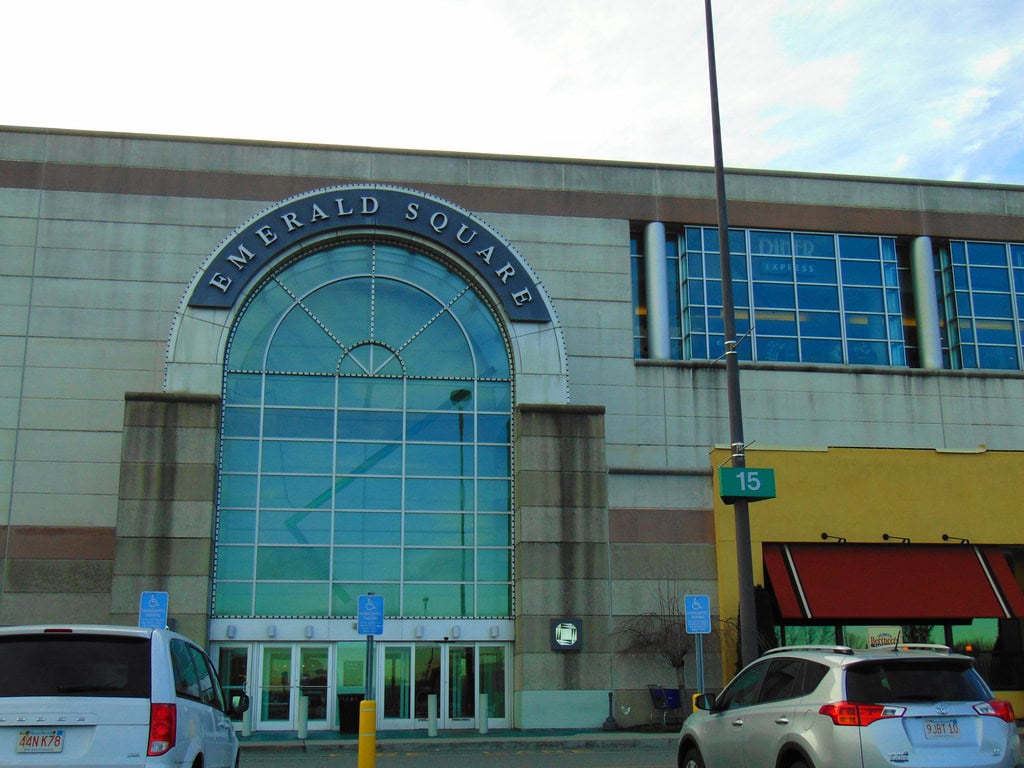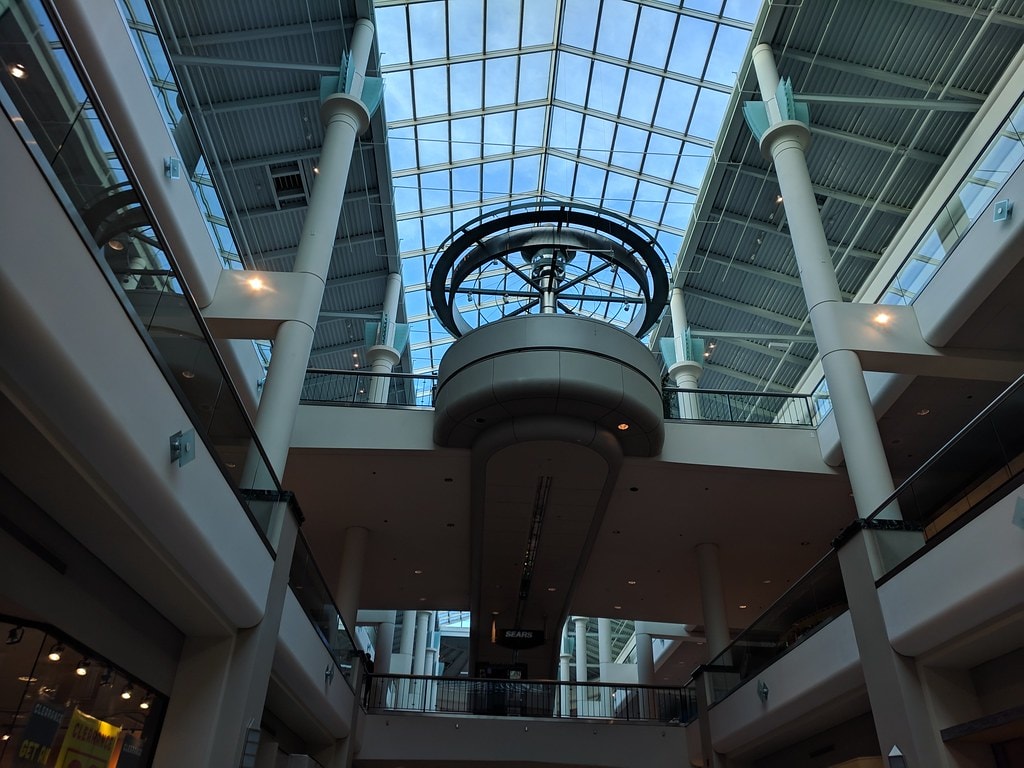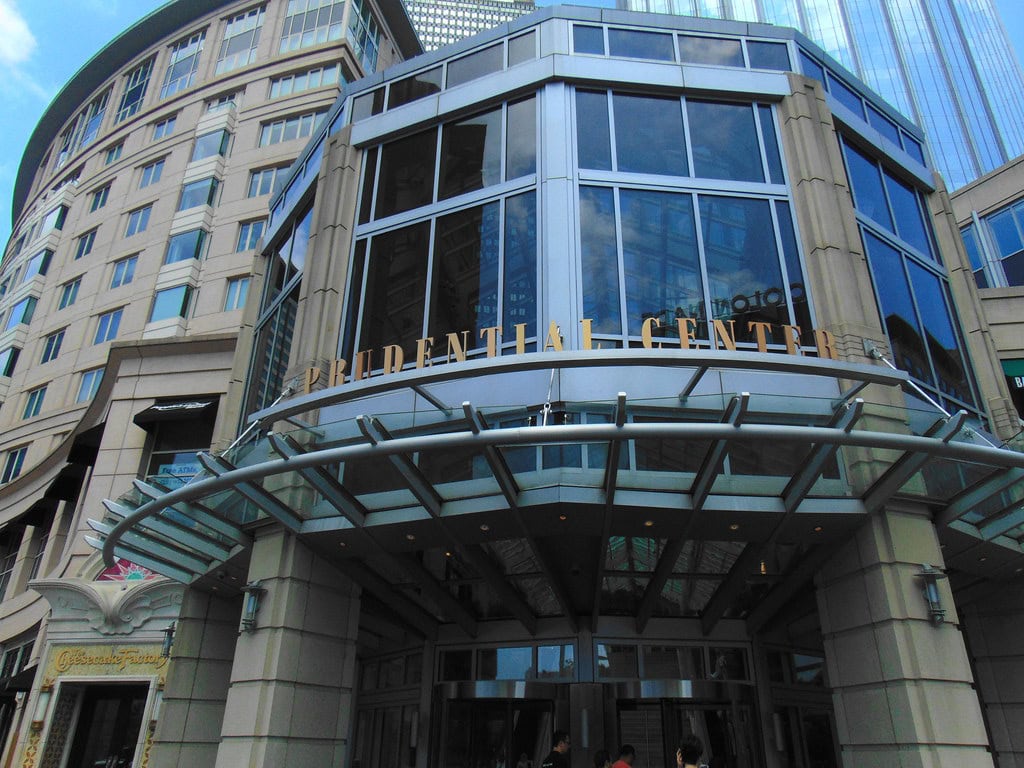Emerald Square Mall in North Attleboro, Massachusetts, started big.
When its doors first swung open on August 10, 1989, estimates put the opening weekend crowd at over 300,000 visitors. That first rush made sense.
Sitting at the busy junction of U.S. Route 1 and Interstate 295, the mall pulled from every direction – from northern Bristol County, southern Norfolk County, and even deep into Rhode Island.
With all that momentum, few could have predicted how different the story would sound by 2025.
Development Deals and Retail Launches (1980s–1992)
Planning for Emerald Square Mall began quietly in the early 1980s.
Developers New England Development and The Pyramid Companies teamed up, sensing that the untouched site along the North Attleborough border could handle a multi-level mall.
Highway access sealed the deal. By 1987, construction contracts were rolling out, and framing work was underway near the I-295 ramps.
When Emerald Square opened in August 1989, its name nodded to the 50th anniversary of “The Wizard of Oz,” a small marketing choice that made the place feel just a little brighter.
The original lineup of anchor stores included Sears, JCPenney, and G. Fox, three heavyweights that set the tone for the mall’s target audience.
Emerald Square also brought 4,350 parking spaces into play, split between multi-level garages and open lots, giving shoppers little reason to hesitate before pulling in.
Retail expansion came fast. In 1992, Lechmere joined the roster, adding another major draw for electronics and appliances.
Those early years built up the mall’s credibility as a retail hub in southeastern Massachusetts, putting it squarely on the map for anyone looking for things to do near Attleboro, MA.

Anchor Store Shakeups and Property Deals (1993–2006)
Emerald Square barely had time to settle before the first round of changes started rolling in.
In 1993, G. Fox rebranded as Filene’s after a corporate shakeup.
The switch was fast – shoppers who visited one weekend found new signs hung by the next.
G. Fox had been a heavy hitter at the mall’s launch, so seeing the name pulled down was a clear signal that retail was already shifting.
Lechmere, who had joined the anchor lineup in 1992, ran into bigger trouble.
The entire Lechmere chain shut down in 1997 after an unsuccessful attempt to retool operations.
That left a gaping hole, but not for long. Lord & Taylor bought the space in 1998, expanded it, and opened a new store there the following year.
Ownership changed hands, too. In 1998, Pyramid Companies sold its stake to New England Development.
Just a year later, in 1999, Simon Property Group stepped in through a portfolio deal that included Emerald Square.
Simon brought national muscle to the table. That same year, the food court added a full carousel attraction, trying to squeeze more family traffic through the doors.
Lord & Taylor left in 2004.
The space did not sit empty – instead, it flipped into a second Filene’s by 2005, doubling Macy’s presence when May Department Stores merged into Federated Department Stores in 2006.
Two Macy’s under one roof made Emerald Square an unusual case in Massachusetts retail.
By then, the mall had already contributed significantly to the expansion of commercial space along Route 1, where strip malls and power centers multiplied quickly.
Occupancy Slips and Tax Troubles (2007–2020)
Emerald Square entered the late 2000s, holding onto a decent 92% occupancy rate, but cracks were easy to spot if you looked closely.
The new competition showed up fast.
Wrentham Village Premium Outlets to the north and Providence Place Mall down in Rhode Island started pulling shoppers away.
Retailers that once jumped at a spot inside Emerald Square hesitated more and more.
On June 14, 2007, the Massachusetts Appellate Tax Board ruled that Emerald Square’s assessed property value was too high.
The mall won a tax reduction after arguing that sluggish retail sales, rising vacancies, and competitive pressure from other shopping centers had hammered property values harder than assessors believed.
It was a win on paper, but it also spotlighted how vulnerable the mall had become.
Tenant losses built up over time. Chains like the Disney Store and Olympia Sports pulled out during the 2010s.
Each closing made it harder to keep the surrounding stores full, especially as online shopping kept growing.
When March 2020 hit, the mall was ordered closed under statewide shutdown mandates.
Though it reopened in June 2020, foot traffic never fully came back.
One of the biggest blows came when Sears closed its doors on April 18, 2021.
Announced in January as part of a larger cut of 23 stores nationwide, the Sears closure left a huge anchor spot vacant.
By the end of 2020, anyone driving by could see empty parking sections and fading storefront signs.
It was a different world from the packed weekends of the early 1990s.

Ownership Transfers and Redevelopment Pitches (2021–2023)
By early 2021, Emerald Square Mall faced bigger problems than just empty storefronts.
After Sears shut down in April, large sections of the mall sat quiet, and Simon Property Group, which had managed the mall since 1999, had fewer reasons to stay invested.
In 2022, Simon transferred ownership of Emerald Square to Kohan Retail Investment Group, a firm known for buying distressed malls.
The first signs of trouble under new ownership were visible in the parking lots.
About 80% of the mall’s structured parking was closed off due to deterioration, forcing shoppers to circle for surface spots even when the lots were half-empty.
Inside, foot traffic kept dropping. Vacancies rose while former brand names gave way to short-term pop-up shops and seasonal outlets.
Local officials noticed. In 2023, North Attleborough floated a proposal to transform the empty Sears anchor space into 340 apartment units.
Early plans sounded ambitious – developers promised new housing options without knocking down the mall itself.
The idea made headlines for a few months but fizzled by late 2023 after engineers ruled the Sears structure too damaged to reuse safely.
The town kept looking at options beyond apartments.
Meetings floated concepts such as a tech or life sciences park, a sports venue, or a new electric vehicle charging center.
What North Attleborough clearly wanted was reuse, not full demolition.
Costs tied to eminent domain takings made total teardown too expensive to pursue seriously.
Public Incidents and Legislative Pressure (2024–2025)
In August 2024, Emerald Square Mall management asked shoppers for input on which stores and services they wanted to see, hoping to draw community ideas into future tenant decisions as vacancies continued to rise.
Emerald Square’s problems went beyond retail losses in 2024.
On September 22, eight bulls escaped from a rodeo event held in the mall’s parking lot.
Video clips of cattle running across Route 1 made local news and turned the mall into a punchline for a few days.
Seven of the animals were rounded up within hours, but the last one took nearly two days to locate near the highway.
Facility issues followed behind. In February 2025, heavy snow and ice triggered a major water leak inside the mall.
Fire alarms went off, forcing an evacuation. Water poured through ceiling panels on the third floor, damaging lights and restrooms.
North Attleboro Fire Department crews isolated power to certain sections, inspected the structure, and gave an all-clear the next day.
Retail spaces continued to empty.
Mall-wide occupancy slipped under 50%, leaving entire corridors dark and silent on weekdays.
State legislators began paying closer attention.
In February 2025, Representative Adam Scanlon filed a bill proposing that towns could charge full property tax rates on malls sitting at low occupancy for more than nine months.
The move was aimed squarely at properties like Emerald Square, where revival looked unlikely without external pressure.
For drivers passing through North Attleborough, Emerald Square had become hard to miss—and hard to ignore.
At the street level, the mall’s exterior shows peeling paint and stained concrete, which are visible reminders of years without heavy reinvestment.

🍀








GET STORES PEOPLE CAN AFFORD PUT IN GOOD FOOD SHOPS ON THIRD FLOOR LIKE POPEYES HARDEES AW ROOTBEER JIMMYJOHNS SUBS .KIDS MOVIE HOUSE FOR SMALL KIDS
The call for “stores people can afford” says more than it sounds. Without everyday budgets in mind, malls lose their draw. Anchor stores and cheap eats used to be the backbone.
So sad used to love Emerald Mall last time I went I was so depressed even Macy’s is not the same
People’s emotional ties to these places run deeper than planners think. There’s real loss behind your words, not just shopping habits.
I saw the other people’s videos of the mall, it’s looking sad & empty and now it’s creepy looking – you won’t find me at the mall ever again. The mall creeps me out now and I don’t like dead & creepy places. I’m happy I went to the grand opening on August 10, 1989 and I saw the ribbon cutting on the 3rd floor!!! I did have a good time shopping at the mall and I missed the good times there. I hope they find other businesses or put in apartments or entertainment places or something to make the mall busy again like in the 1990’s!!!!
Your memory of the ribbon cutting on the third floor adds something personal to the story. Most people only saw the mall during an ordinary visit, but you were there when it began – at the moment, the town probably saw it as full of promise.